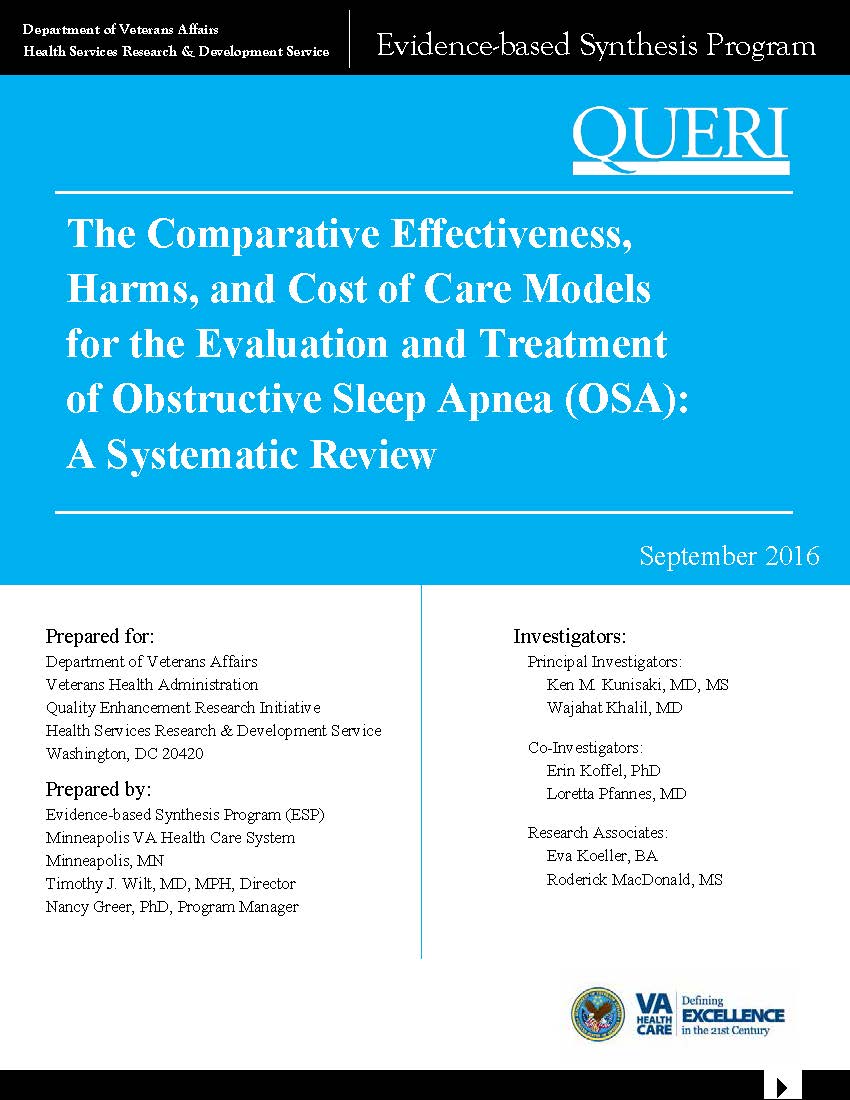
Principal Investigators:
Ken M. Kunisaki, MD, MS;
Wajahat Khalil, MD
Co-Investigators:
Erin Koffel, PhD;
Loretta Pfannes, MD
Research Associates:
Eva Koeller, BA;
Roderick MacDonald, MS
Download PDF: Complete Report, Executive Summary, Report, Appendices
Rising requests for obstructive sleep apnea (OSA) diagnostic and treatment services may make traditional in-person evaluation processes unnecessarily expensive and inefficient.
To assess the comparative effectiveness, harms, and costs of care models for OSA evaluation and treatment.
Key Question 1. For adults with suspected OSA, what are the effectiveness/harms/resource utilization of case finding and care provided by practitioners who are not sleep physicians (including PCPs, PAs, NPs, technologists, nurses, and respiratory therapists), compared to case finding and care provided by sleep specialist physicians?
Key Question 2. For adults with suspected OSA, what are the effectiveness/harms/resource utilization of electronic consultation versus interactive (eg, in-person, telephone) consultation?
Key Question 3. For adults diagnosed with OSA, what are the effectiveness/harms/resource utilization (including cost avoidance) of using in-home autotitrating continuous positive airway pressure (APAP) technology compared to standard continuous positive airway pressure (CPAP) titrated by in-lab PSG?
Obstructive Sleep Apnea (Management Brief)
Kunisaki K, Greer N, Khalil W, et al. Provider Types and Outcomes in Obstructive Sleep Apnea Case Finding and Treatment: A Systematic Review. Annals of Internal Medicine. 2018;168(3):195-202. doi: 10.7326/M17-2511.